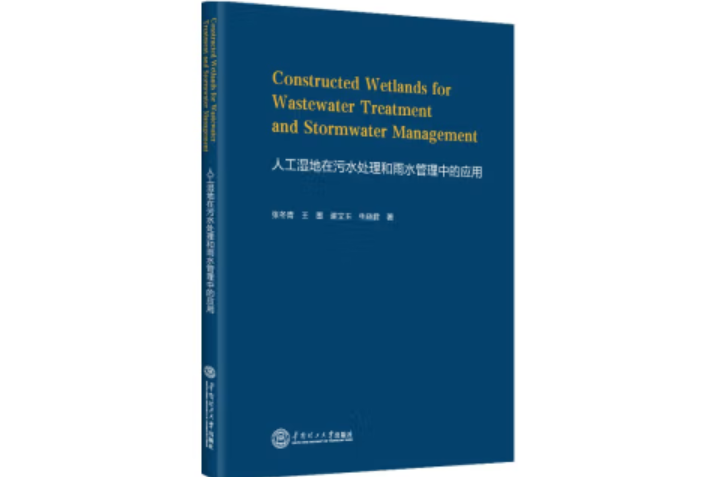內容簡介
Constructed wetlands(CWs)are engineered systems designed and constructed to utilize the natural functions of wetland vegetation,soil media,and their associated microbial associated assemblages for wastewater treatment within a more controlled environment. Because of their high pollutant removal efficiency,easy operation and maintenance,low cost,good potential for water and nutrient reuse,tolerance to high variability,and function as significant wildlife habitat,CWs have been recognized as a green treatment technology for sustainable wastewater management. To date,CWs have been widely used to treat various kinds of wastewater such as domestic sewage, agricultural wastewater, industrial effluent,mine drainage, landfill leachate,storm water,polluted river water,and urban runoff in the last few decades. Currendy,numerous studies have focused on the design,development,and performance of CWs. In treatment wetlands,the pollutant removal efficiency varies considerably. Such variability can be traced back to the complex combination of physical,chemical and biological processes for contaminant removal,This book investigated the removal performance of CWs for various pollutants,including not only conventional parameters(e.g.,organic matter,nutrients,and trace elements) ,but also emerging contaminants(e.g.,pharmaceutical contaminants, engineered nanoparticles and poly- and perfluoroalkyl substances(PFASs)etc.)from wastewater. A variety of removal processes and mechanisms in CWs,such as sedimentation,filtration,precipitation,volatilization,adsorption,plant uptake,and biodegradation,have been elucidated.Furthermore,the optimal operating parameters,such as water depth,hydraulic retention time and load,feeding mode and design of setups,have also been addressed. Other extemal environmental factors which may affect the removal efficiencies in CWs,such as temperatures,feeding strategies,availability of dissolved oxygen and organic carbon source,operation strategies,pH and redox conditions,have also been summarized. In addition,this book alsopresents the application of CWs for treating various pollutants in developing counties,in cold and tropical climates. Moreover,the methodology of assessing the hydrological performance and optimizing spatial allocation of low impact development(LID)practices on urban surface runoff management in response to climate change and urbanization has been shown in this book. Innovative future scenario modeling including simulating the potential impacts of extemal chronic stressors on urban hydrology contributes to the spatial decision-making of LID practices implemented such as CWs. Analysis,planning,and application of LID in different scale and scenarios for various hydrological objectives can be found in this book.
圖書目錄
Section 1 Constructed Wetland8 for Wastewater Treatment
Chapterl Overview
1.1 Introduction
1.2 Classification of constructed wetlands
1.2.1 Free water surface (FWS) CWs
1.2.2 Subsurface flow (SSF) CWs
1.2.3 Hybrid systems
1.2.4 Floating treatment wetlands (FTWs)
1.3 Components of constructed wetlands
1.3.1 Soilmatrix
1.3.2 Macrophytes
1.3.3 Organisms and microbial community
References
Chapter 2 Removal of Orgaruc Matter in Constructed Wetlands
2.1 Aerobic degradation
2.2 Anaerobic degradation
References
Chapter 3 Removal of Nitrogen in Constructed Wetlands
3.1 Ammonia volatilization
3.2 Ammonification
3.3 Nitrification
3.4 Nitrate ammonification
3.5 Denitrification
3.6 Fixation
3.7 Ammonia adsorption
3.8 Plant uptake
3.9 Partial nitrification-denitrification
3.10 Anammox
3.11 CANON
References
Chapter 4 Removal of Phosphorus in Constructed Wetlands
4.1 Peat/soilaccretion
4.2 Soil adsorption and precipitation
4.3 Microbiotauptake
4.4 Plant uptake
Chapter 5 Removal of Heavy Metals in Constructed Wetlands
5.1 Phytoremediation of heavy metals: traditional concept
5.1.1 Phytoextraction
5.1.2 Phytofiltration
5.1.3 Phytostabilization
5.1.4 Phytovolatilization
5.1.5 Phytodegradation
5.1.6 Rhizodegradation
5.2 The mechanisms of heavy metal uptake, translocation and tolerance
5.3 Phytoremediation of heavy metals: new concept
5.3.1 Chemical-assisted phytoremediation using nonehyperaccumulator plants
5.3.2 Biochar-assisted phytoremediation
5.3.3 Microbial-assisted phytoremediation
5.3.4 Use of transgenic plants Refe rences
Chapter 6 Removal of Pharmaceutical Compounds in Constructed Wetlands
6.1 Application performance of PPCP removal in CWs
6.1.1 CWs as alternative for secondary wastewater treatment systems
6.1.2 CWs as alternative for tertiary wastewater treatment systems
6.2 Pharmaceutical removal mechanisms in CWs
6.2.1 Photolytic degradation
……
Section 2 Low Impact Development for Future Scenario Assessment
作者簡介
張冬青,長期從事藥物活性化合物(PhACs)在人工濕地中歸趨和去除的研究。作者是全球範圍內早期開展有關藥物活性化合物在人工濕地中的分布、歸趨和去除的研究人員之一,帶領課題研究小組取得的科研成果引起全球範圍內相關領域的廣泛關注。 多年以來,其在利用人工濕地去除藥物活性化合物的研究領域形成了自己的特色和優勢,多年來積累了豐富的研究經驗,研究成果處於國一際領一先水平。先後在Water Research, Bioresource Technology, Journal of Cleaner Production, Environmental Pollution,Science of Total Environment等SCI期刊發表論文68篇。

